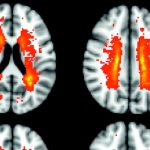An article published in the international journal Glia gives new insight into the structure of lesions in the spinal cords of people with progressive MS.
Researchers from the Lyon Neuroscience Research Centre in France recently undertook a study of spinal cord tissue donated to the MS Tissue Bank at Imperial College in London by 16 people who had either a primary or secondary progressive form of MS.
As nerve cell damage accumulates in MS, regions of the brain and spinal cord lose the protective myelin coating around nerves (‘demyelination’) resulting in lesions, also called plaques, of damaged tissue. In this study, the researchers aimed to analyse the damaged nerve cells within the spinal cord, looking specifically at the tissue immediately surrounding a lesion in the spinal cord, known as ‘peri-plaque’ regions. Some previous studies have found that the peri-plaque regions may show signs of damage and demyelination similar to the lesion itself; however, very few previous studies have measured the degree of demyelination in these regions, or the profile of immune system involvement in this area.
The spinal cord is of key interest because it shows increasing damage as MS progresses, and the extent of spinal cord lesions is more strongly associated with level of disability than brain lesions. Using special staining techniques, the researchers identified that the extent of demyelination in peri-plaque areas in the spinal cord extended further than previously thought.
The researchers analysed the molecular ‘signature’ of immune system activity in the peri-plaque regions, and reported subtle alterations in a number of different cell and protein types that may contribute to the observed demyelination. They found that these areas of tissue contained immune molecules known to inhibit the repair and remyelination of nerve cells, and also had increased activity of several immune-related genes. Furthermore, the researchers found that the peri-plaque regions were associated with low-level inflammatory activity predominantly from resident support cells of the brain, rather than immune cells that infiltrate the spinal cord from the blood. The finding suggests that these cells may contribute to progressive loss of myelin and the failure of myelin repair that gradually spreads beyond the initial lesion. The researchers suggest these peri-plaque areas might contribute to some of the neurological disability reported by people with progressive MS, and represent a potential target for the development of new treatments aiming to limit the spreading of tissue damage and myelin degeneration.
This study highlights the value of studying human tissue to deepen our understanding of the structure and causes of MS lesions and how these lesions might affect nerve functioning in the brain and spinal cord.
To register your interest in becoming a donor with the MS Research Australia Brain Bank, visit www.msbrainbank.org.au/register or call 1300 672 265.






